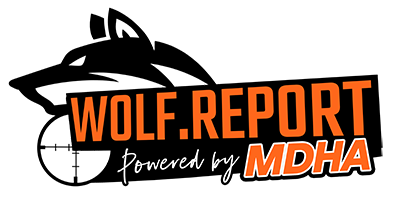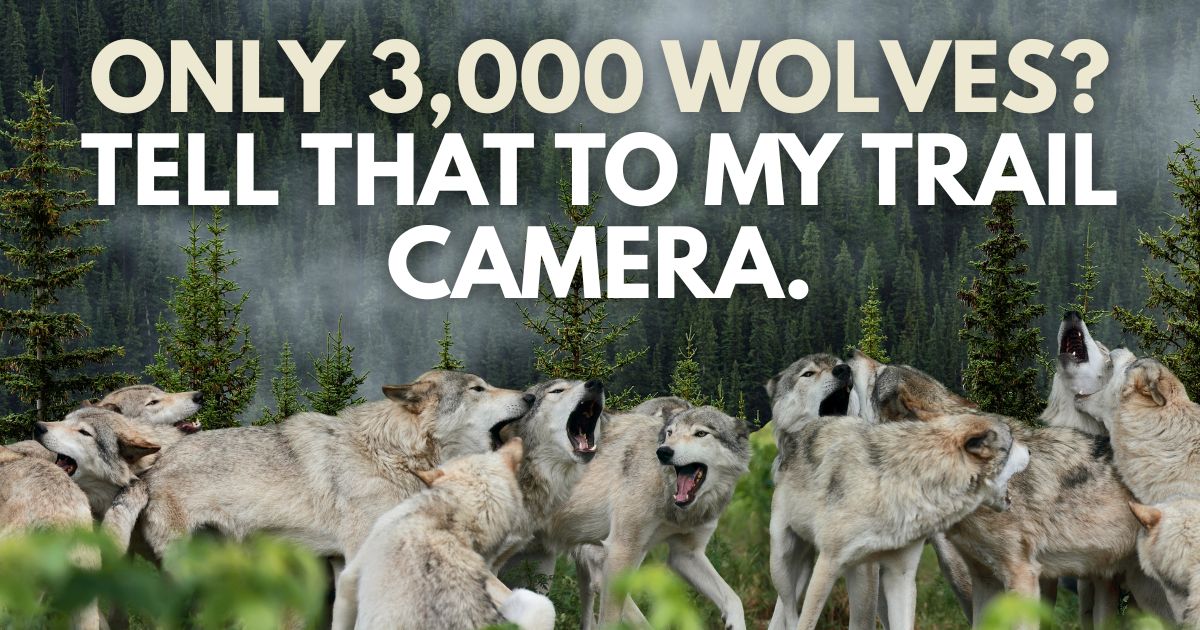

Every fall, hunters across northern Minnesota share photos from their trail cameras. Deer, bear, coyotes, the occasional moose — and more often than not, wolves. It’s no surprise anymore when someone says, “Seems like every other card pull has wolves on it.”
So why does it feel like there are wolves everywhere, when the Minnesota DNR says the state’s wolf population is roughly 2,700–3,000 animals?
Wolves don’t scatter evenly across the landscape like deer. They live in packs, and each pack defends a large territory — often 40 to 80 square miles. If your hunting land lies inside one of those territories, you’ll likely see wolves on camera over and over again. Even a handful of wolves can give the impression of a much larger presence.
Minnesota’s wolves aren’t spread thin across the whole state. They’re concentrated in the north woods, especially in areas with plenty of deer. In these hotspots, wolf densities can reach 8–12 wolves per 40 square miles. For hunters in these regions, it’s almost inevitable that trail cameras will capture wolves multiple times each season.
Technology has changed the game. Today’s trail cameras run 24/7, detect motion instantly, and many hunters use several cameras per property. That means a wolf wandering through has a much higher chance of being photographed — sometimes by multiple hunters in the same area. One wolf can appear in dozens of photos across different cameras, adding to the sense that they’re everywhere.
Let’s be honest: you’ve probably scrolled past a thousand deer pictures without much thought, but a wolf photo? That gets saved, shared, and remembered. Human psychology makes wolf encounters seem more frequent than they really are because they carry more weight for us as hunters.
The Minnesota DNR officially defines wolf range across the northern and central forested part of the state. But more and more reports — including trail camera photos — are coming in from the southern edge of that line. Hunters are seeing wolves where the DNR does not yet include them on its official maps.
This kind of evidence matters. Consistent reports near the boundaries suggest wolves are expanding their range further south and west. That means it may be time for the DNR to revisit and adjust its stance on Minnesota’s “official” wolf range.
The strength of Wolf.Report comes from hunters like you. Every trail camera photo and observation adds to the database, making the heat maps and cluster analysis stronger.
👉 You can help us get better data by submitting your trail camera photos and sighting details on a regular basis.
Regular reporting shows patterns over time.
More submissions at the range edges help show where wolves are expanding.
Consistency builds the kind of evidence that wildlife managers cannot ignore.
Together, we can show just how widespread wolves truly are in Minnesota.
We’ve taken thousands of hunter-submitted wolf reports and built an interactive heat map that shows where wolves are being seen across Minnesota.
👉 Click here to explore the Wolf.Report heat map
Seeing wolves on your trail cameras doesn’t mean there are 10,000 wolves roaming Minnesota. But it does mean wolves are healthy, widespread, and thriving in the places we hunt deer. That’s proof enough that wolf management isn’t just necessary — it’s overdue.
